Hidden away in the southwestern part of the Sierra de Aracena y los Picos de Aroche Natural Park in Huelva province is the small village of Almonaster la Real.
By Nick Nutter | Updated 22 Sep 2022 | Huelva | Villages |
Login to add to YOUR Favourites or Read Later
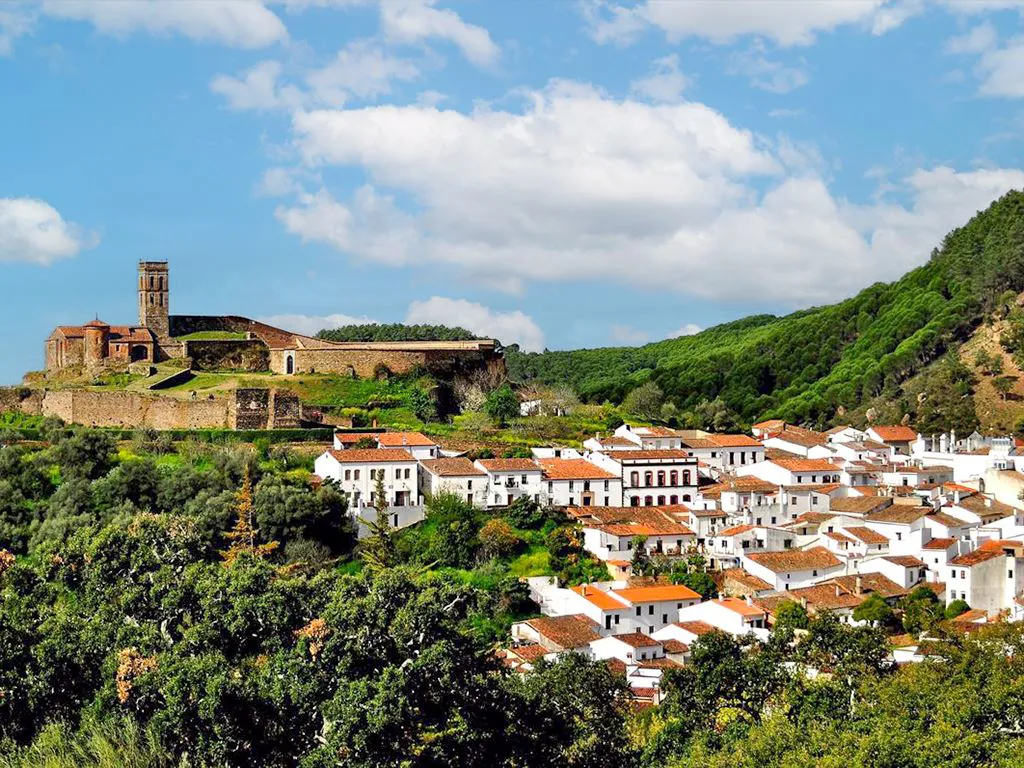
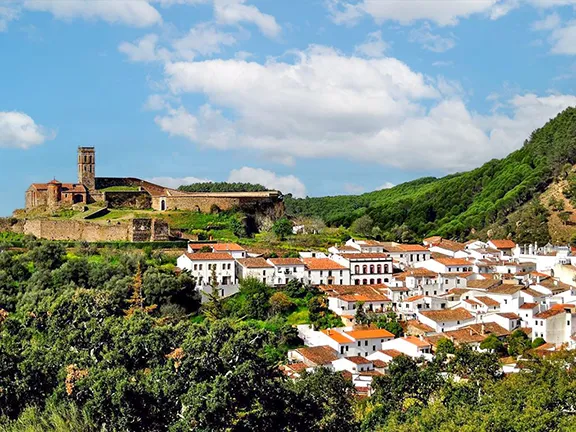
Almonaster la Real
Its fairly remote position has insulated Almonaster la Real from progress through the ages. You could use the adjectives quaint, timeless and picturesque to describe this village that, like many in Andalucia, gathers itself in the shadow of its castle for protection.
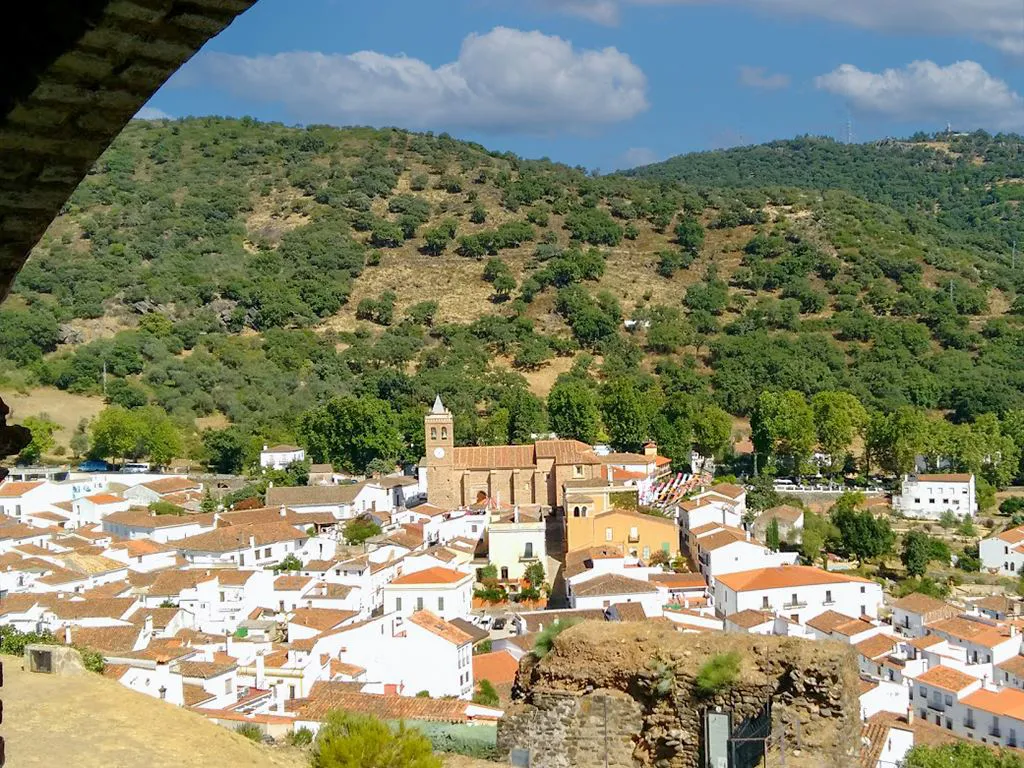
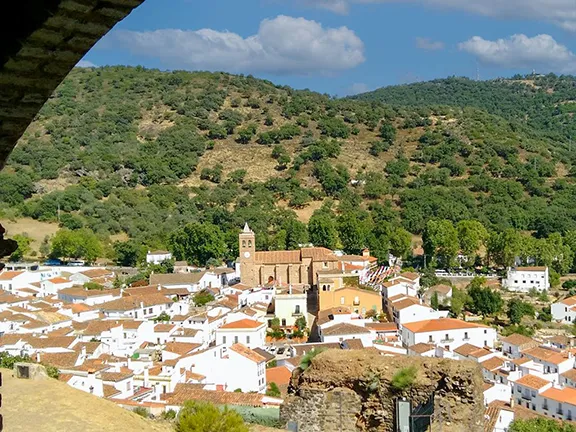
Almonaster la Real from Castillo Mezquita
Surrounded by the meadows, stands of holme and cork oak, chestnut trees and typical mountain undergrowth of the Sierra de Aracena y los Picos de Aroche Parque Natural, the immaculately kept village sits on a low, rounded hill. The narrow, cobbled streets are lined with small houses, many of which have ornate first floor balconies burgeoning with red geraniums and bougainvillea. All lead to the main square with the 14th century Iglesia de San Martín on one side.
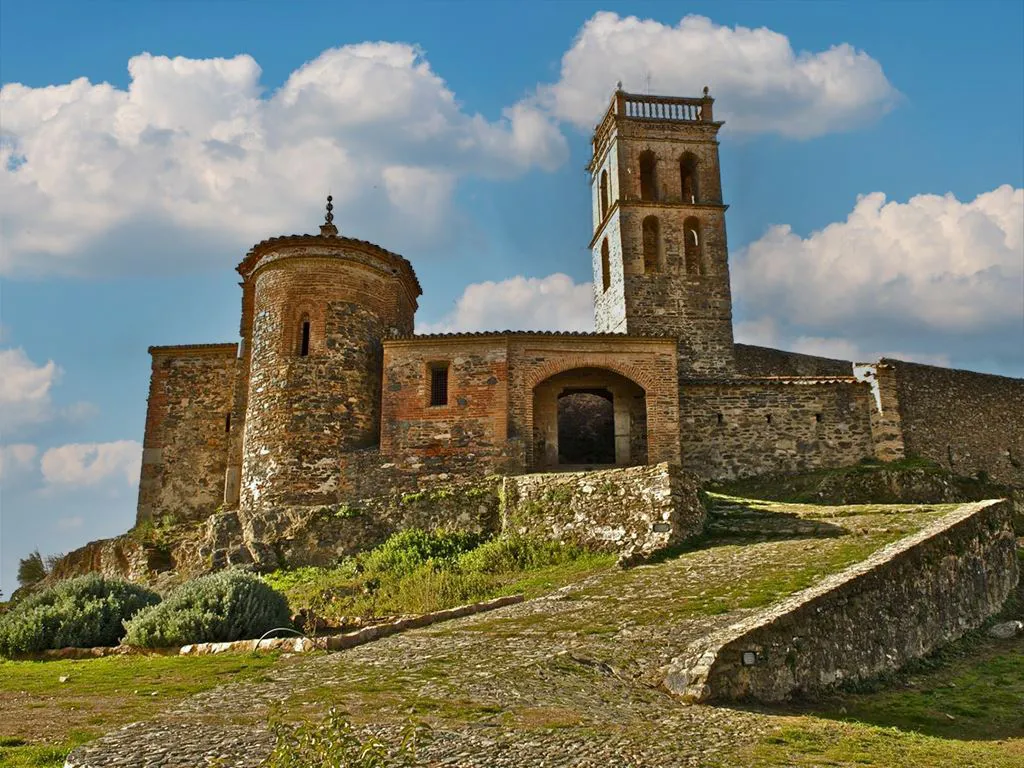
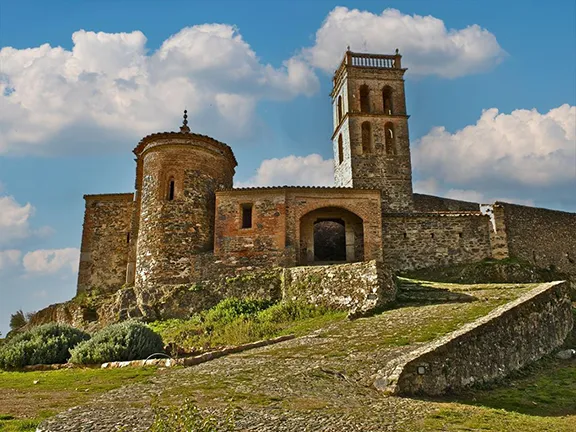
Castillo Mezquita de Almonaster la Real
The area has been occupied since the Neolithic period although Almonaster la Real was not founded until Roman times. Following the Romans, the village was occupied by the Visigoths and then, after 711 AD, by the Muslims. The name Al-munia, which means ‘the fortress’, was given to the settlement.
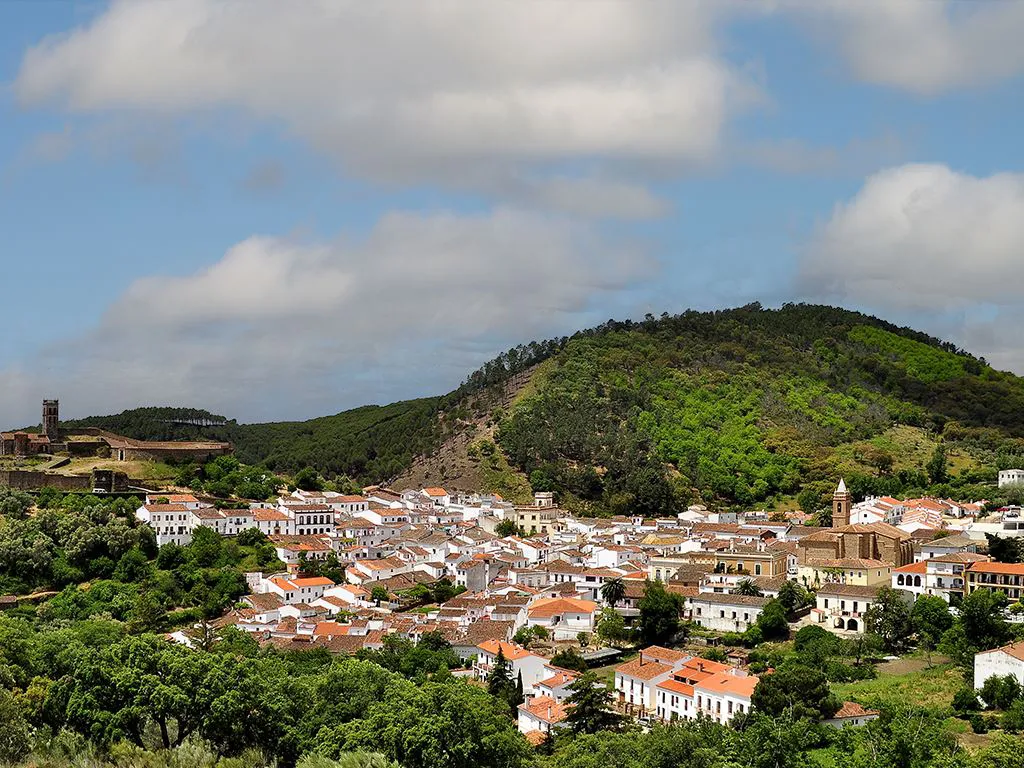
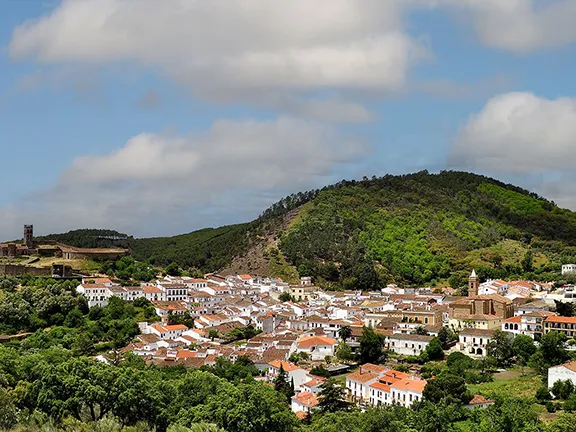
Almonaster la Real
The reconquest occurred in the early 13th century and under the Treaty of Badajoz (1267) between King Alfonso X of Castile and King Afonso III of Portugal it became part of Castile as did all the villages on the north bank of the Guadalquivir.
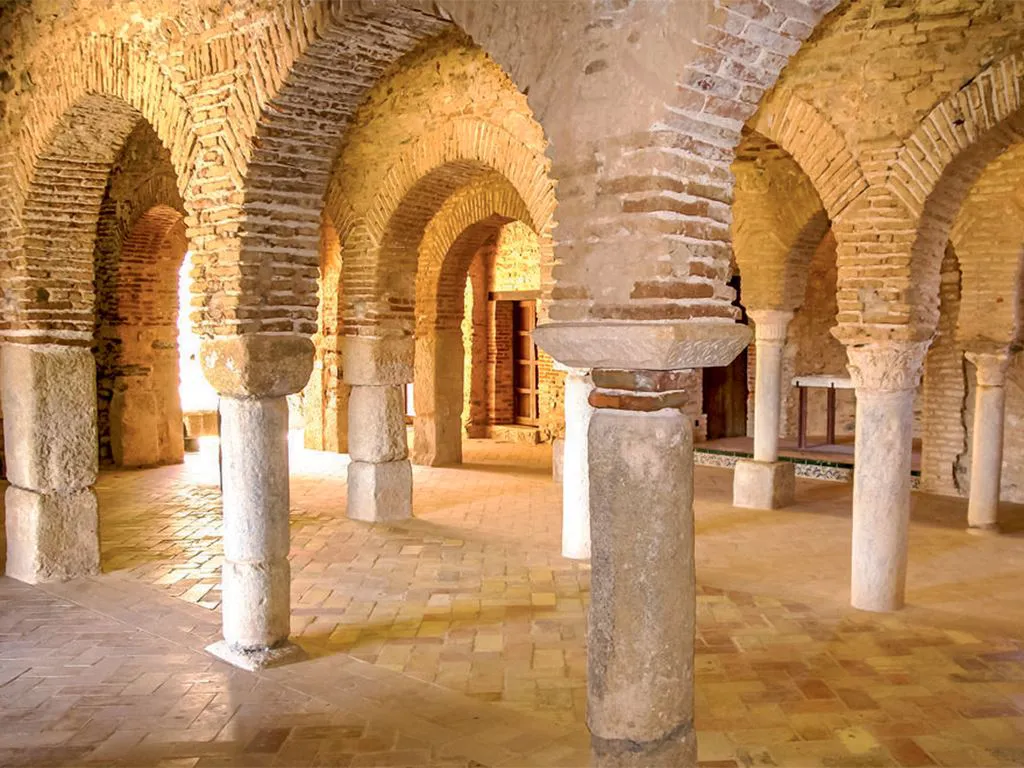
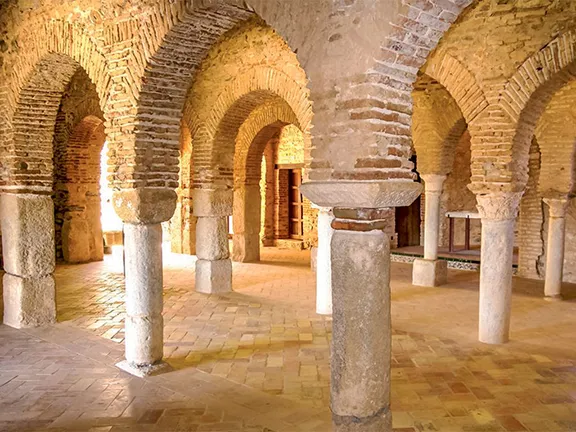
Mezquita de Almonaster la Real
During the reign of Alfonso X in the year 1284, it came under the jurisdiction of the Archbishop of Seville. Three hundred years later in 1579, a Papal Bull from Gregorio XIII, returned it to the Crown. On May 10th 1583, Almonaster became Crown property, forming part of the former Kingdom of Seville and adding ‘Royal’ to its name.
Various elements of the architecture of Iglesia Parroquial de San Martín highlight the history of the town. Almonaster la Real was re-conquered during the first half of the 13th century by troops from Portugal. Construction of the church began in the early 14th century in the Mudéjar style, reflecting the continued influence of the Muslims that choose to remain after the reconquest. Modifications were made in the 15th century including the addition of an exterior altar in a style named Mudéjar-Gothic. The Portuguese influence is seen in the choir stalls, the tower and the Perdón door that were built in the first third of the 16th century. The door is a magnificent example of the Portuguese Manueline style so characteristic of the rural churches of the Alentejo region. All combined, the Iglesia Parroquial de San Martín is a fantastic example of a Gothic – Mudéjar church.
Until the 19th century, the economy centred on agriculture, livestock and forestry. Then, in the middle of that century, valuable copper and manganese deposits began to be exploited on an industrial scale in the hills surrounding the town. The population increased exponentially until, in the 1920s, the mining bubble burst. The railway station at Almonester Cortegana is a lasting reminder of the mining industry. Almonaster has now returned to its roots as a rural town that bases its economy on agriculture.
Almonaster la Real is one of the prettiest villages in Spain according to the Los Pueblos Más Bonitos de España (prettiest villages in Spain) association.
The Church-Mosque of Nuestra Señora de la Concepción at Almonaster la Real was built between the 9th and 10th centuries although its foundations date to the Visigothic period.
The castle was built on the remains of a 6th-century Visigoth basilica, whose materials were reused in its construction. After the reconquest the castle-mosque was converted into a shrine.
This is a site of exceptional historic and artistic value, as it is the only mosque in Spain, adapted and developed during four periods of Andalucian history, Visigothic, Roman, Muslim and Christian, in a rural area and which has come down to us practically intact. It has elements of the Roman, Almohad and Gothic styles, and was classified as a historic monument in 1931.
The mezquita's prayer niche facing Mecca, the mihrab, is the oldest example to be found in Spain. The interior consists of five naves, the mihrab and a 'forest' of arches supporting the ceiling, redolent of the Mezquita at Cordoba.
Within the castle walls, alongside the mosque is a small bullring with dry stone walls.
For opening times of Castillo Mezquita de Almonaster la Real, click here.